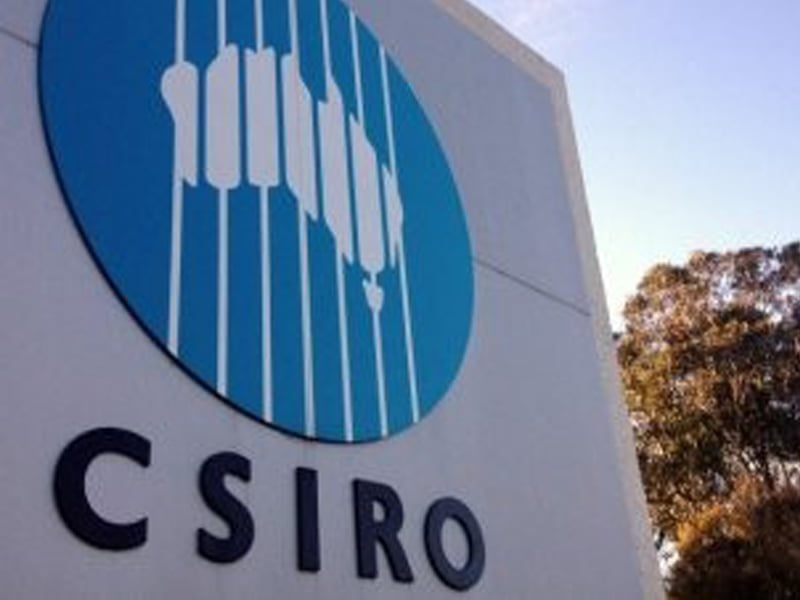Australia’s national science agency will invest $100 million over four years in emerging technologies to assist with the economic recovery, including a significant focus on digital transformation in the healthcare sector.
CSIRO announced the increased investment for its research programs the day before the federal budget will be unveiled by Treasurer Josh Frydenberg, which will include $50 million for the establishment of a National Artificial Intelligence Centre within the agency.
The money will go towards five science and technology growth areas: biomedical manufacturing, digital manufacturing, digital healthcare, artificial intelligence and emerging technologies including quantum computing.

The funding will provide for new capabilities in the agency’s workforce and help to drive Australia’s economic recovery from the COVID-19 pandemic, CSIRO chief executive Dr Larry Marshall said.
“COVID-19 and Australia’s lived experience during the pandemic has shown that science can deliver remarkable solutions to solve our greatest challenges, like predicting and isolating COVID hotspots, agile manufacturing to create a sovereign supply of desperately needed products, and virtual healthcare for our most vulnerable communities wherever they live across our continent,” Dr Marshall said.
“The world is facing unprecedented disruption, but disruption creates new opportunities for the bold, and the actions we take now can set the path towards a brighter future for all Australians.”
The increasing funding was allocated as part of CSIRO’s annual planning process, and will run to 2024.
The digital healthcare funding will go towards driving digital transformation in the sector, far beyond the growth in telehealth seen during the pandemic, CSIRO Director of Health and Biosecurity Dr Rob Grenfell said.
“During COVID we had some major shifts that occurred in the provision of healthcare, in particular the rapid adoption of telemedicine and video conferencing,” Dr Grenfell told InnovationAus.
“We’re looking at something that’s bigger than that, we’re looking across the segments at how we actually strengthen the architecture to provide a safe and efficient healthcare system and how it can work across the various areas.”
The focus will be on wearables and other data inputs to assist with the delivery of healthcare, along with a focus on aged care, Dr Grenfell said.
The funding boost will allow the agency to address the issue at scale and take advantage of the rapid growth in digital healthcare due to the pandemic.
“With that sizable investment, we can do this at a much larger impact. We want to take this to scale – let’s make this the health system in Australia, not just pockets of excellence,” Dr Grenfell said.
“Health is an extremely complex system. The change process is actually quite laborious and challenging, so when you have a step-change like with COVID where people have been essentially pushed to actually adopt these technologies and they’ve found they’re actually not that scary, it is in fact an opportunity to expand on that.”
CSIRO will be looking to partner with a range of organisations and governments on this mission.
“We don’t do this by ourselves, we’re doing this with many other players – the sector itself, state governments, the federal government and most importantly with the patients and the people being cared for in the system,” Dr Grenfell said.
“The success of the investment will come from generating the enthusiasm and power of other agencies and collaboration.”
In biomedical manufacturing, the funding will be going towards CSIRO working with local companies to build Australia’s capability in developing, manufacturing and commercialising Australian biomedical science.
The digital manufacturing strand will be focusing on automation, robotics, Internet of Things, data analytics, and cybersecurity, and will facilitate industry access to expertise at CSIRO, along with research and facilities to “accelerate the advancement of modern digital manufacturing, and deployment of technology to industry”.
Funding will also go towards scaling up the application of artificial intelligence to assist with CSIRO’s Mission.
This will work in tandem with the $50 million National Artificial Intelligence Centre, announced last week, which will be established within CSIRO.
The final element of the investment will be for backing the “next big” science breakthroughs, including quantum technology. This will be made through CSIRO’s Future Science Platform.
Last year’s late federal budget allocated $459 million over four years to CSIRO as a lifeline to plug a hole in the agency’s commercial activities, created by the ongoing pandemic. Last month CSIRO also announced that it had joined the Global Power System Transformation, a research consortium focusing on the acceleration of the decarbonisation of the electricity system.
Do you know more? Contact James Riley via Email.


A focus on Emerging Technologies – haven’t we heard this before in previous government inspired innovation policies and programs?
A focus on emerging technologies per se to develop a technology push approach to new industry development is hardly of much benefit, if it does not take much notice of EMERGING GLOBAL MARKET OPPORTUNITIES.
We need to get out technologist and industry specialists to engage in some global market exploration, and if that means sending groups overseas to see what other technologies centres are up to, and then identifying market gaps that Australia can fill, so be it!
We have adopted this approach before in the late 1990s with the then emerging photonics industry through the auspices of the Australian Photonics CRC, and which resulted in a couple of successful start-ups being established.